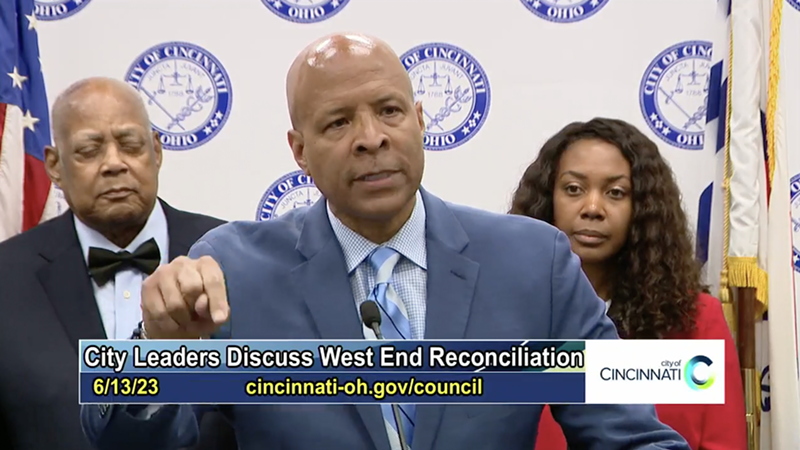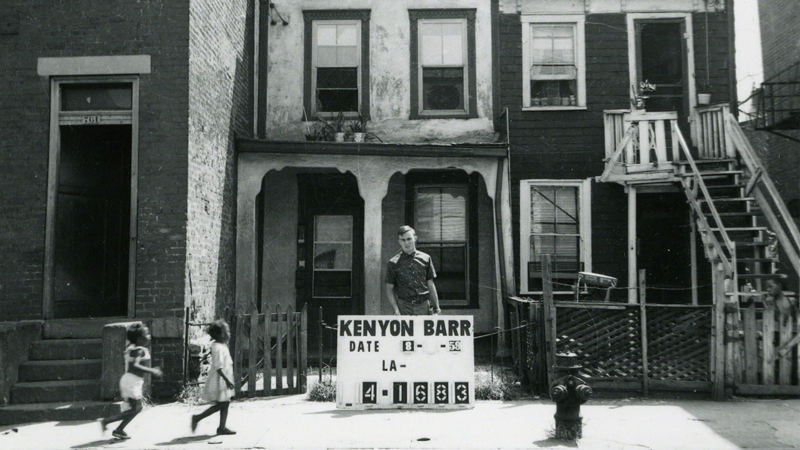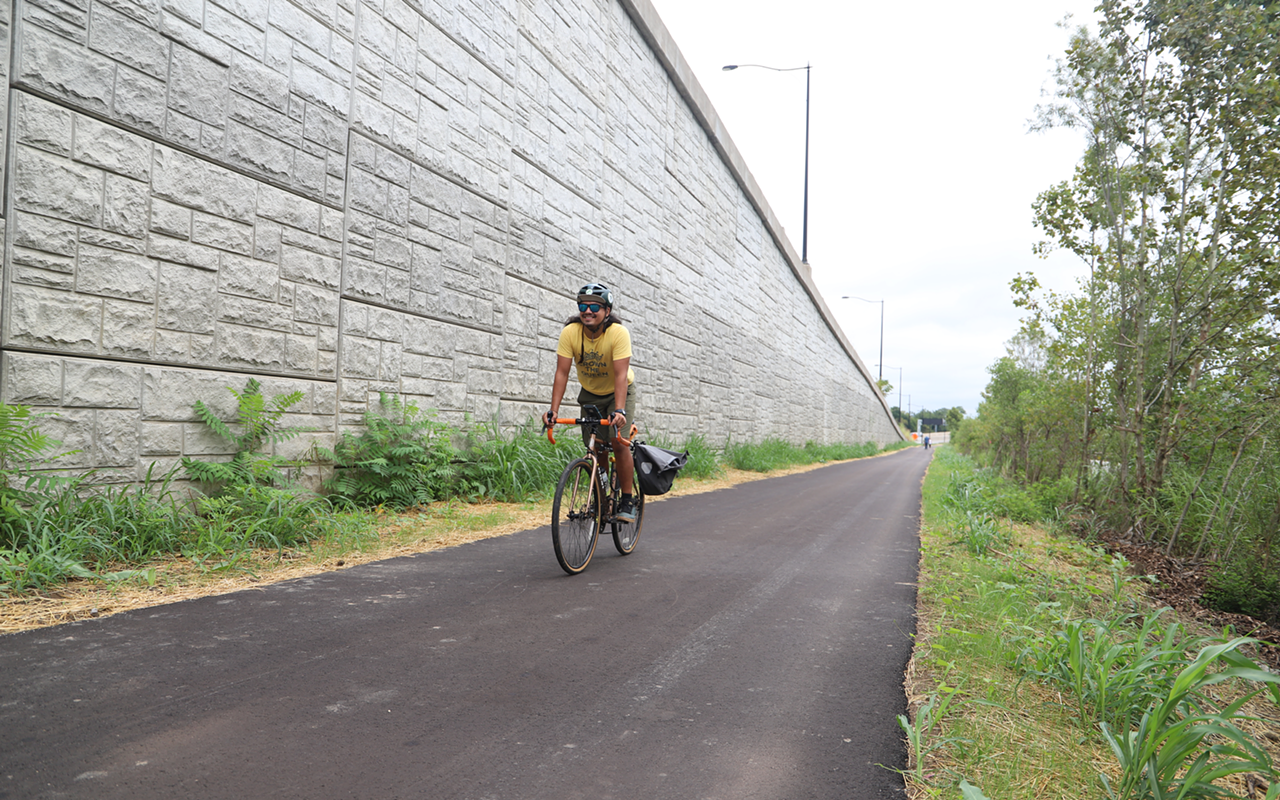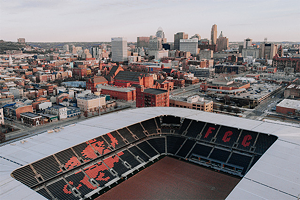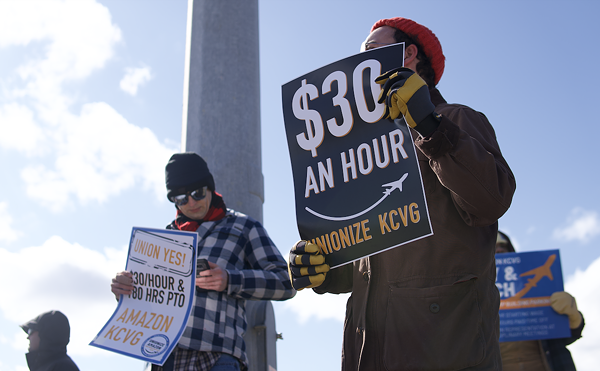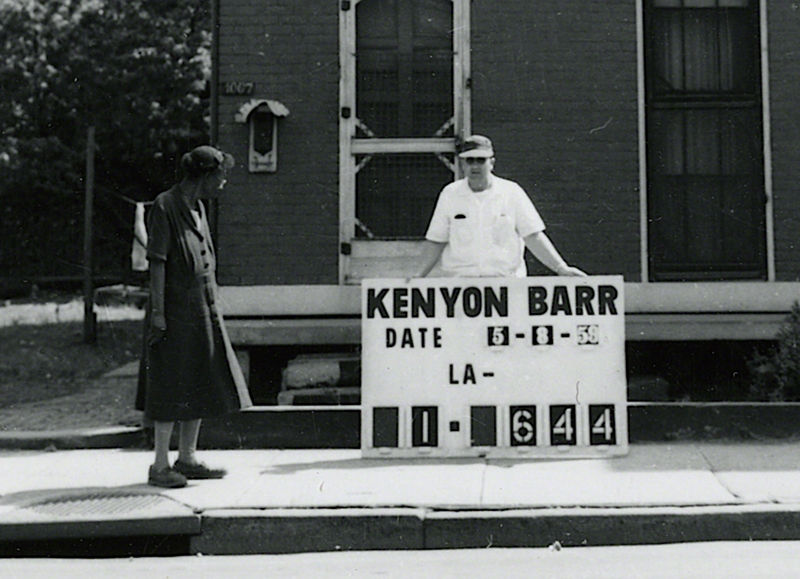
Photo by: Cincinnati Museum Center // Cincinnati History Library & Archives
The city of Cincinnati is apologizing to former West End citizens and their decedents for kicking thousands out of their homes to connect Downtown with I-75 starting in 1948.
Cincinnati city leaders are apologizing for the sins of politicians past, saying the dismantling of one of Cincinnati’s historically Black neighborhoods for the sake of a highway was wrong, racist and created long term damage to the Black community felt to this day.
"The lower West End, the Kenyon-Barr district, was home to a vibrant and beautiful Black community. A community that, because of the city of Cincinnati's actions in the middle of the 20th century, because of deep-seated institutional racism, was torn apart," said Mayor Aftab Pureval during a June 13 press conference at City Hall.
“We apologize to the West End’s families and communities, to the West End itself, for the city’s destruction and displacement of the community."
As a part of Cincinnati’s 1948 “Master Plan,” city leaders leveled more than 2,800 homes, businesses, churches, and other buildings. The “slum clearance” effort was part of a federal “urban renewal” initiative meant to make room for the expansion of I-75 and the Queensgate industrial neighborhood. Residents had no choice but to pack up and leave behind their homes, effectively eliminating a large swath of the predominantly Black West End neighborhood, dubbed Kenyon-Barr by demolition planners, from the city’s map."The lower West End, the Kenyon-Barr district, was home to a vibrant and beautiful Black community. A community that, because of the city of Cincinnati's actions in the middle of the 20th century, because of deep-seated institutional racism, was torn apart," said Mayor Aftab Pureval during a June 13 press conference at City Hall.
“We apologize to the West End’s families and communities, to the West End itself, for the city’s destruction and displacement of the community."
The "Master Plan"
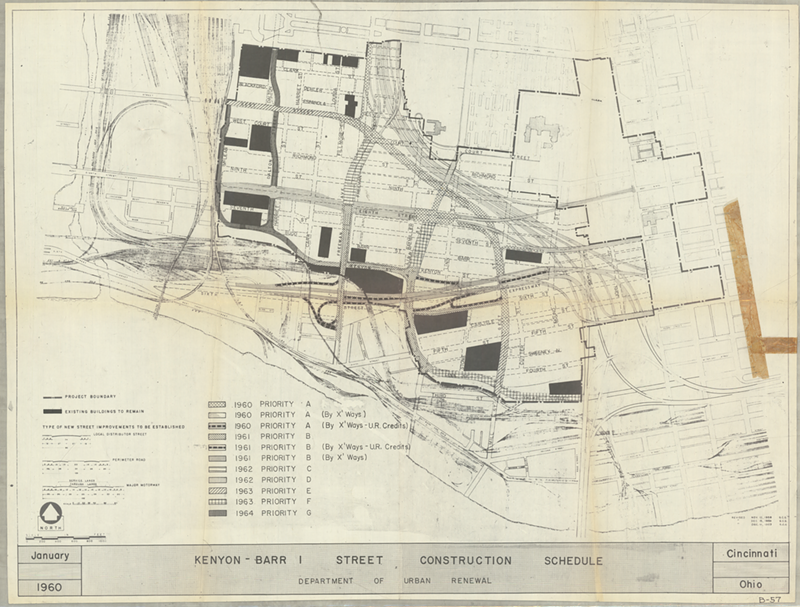
Courtesy Archives and Rare Books Library, University of Cincinnati
A map of planned changes to the street grid in Cincinnati's West End following the demolition of thousands of buildings.
Councilmember Scotty Johnson organized the public apology, saying structural racism was planned and took place in the same City Hall from which he stood behind a podium.
“That is why this press conference, the apology, had to come from right here in this building," he said. "The planning to devastate and destroy took place in this building and now the apology to rebuild and prayerfully get to reconciliation has come from this building.”
About 25,000 people, mostly Black, were abruptly forced from their homes with promises of relocation assistance that never came. Businesses were either left behind or forced to restart elsewhere, including 80 churches and nearly 90 barber shops and beauty salons, almost 50 clothing stores, and more, according to Vice Mayor Jan-Michele Kearney.
“That is why this press conference, the apology, had to come from right here in this building," he said. "The planning to devastate and destroy took place in this building and now the apology to rebuild and prayerfully get to reconciliation has come from this building.”
About 25,000 people, mostly Black, were abruptly forced from their homes with promises of relocation assistance that never came. Businesses were either left behind or forced to restart elsewhere, including 80 churches and nearly 90 barber shops and beauty salons, almost 50 clothing stores, and more, according to Vice Mayor Jan-Michele Kearney.
Kearney spoke about her ties to the “extermination of Kenyon-Barr” when her father, who was a doctor, was forced to move his medical practice from Clark Street to Avondale.
“All his life he talked about his office on Clark Street and he described it and how it had the circulatory system painted on the walls,” she said. “He talked about his patients who were West End residents, they were his patients and his friends.”
Towards the end of the press conference, one of those patients stood up to speak.
“All his life he talked about his office on Clark Street and he described it and how it had the circulatory system painted on the walls,” she said. “He talked about his patients who were West End residents, they were his patients and his friends.”
Towards the end of the press conference, one of those patients stood up to speak.
“Your father was my doctor on Clark Street,” Oscar Wright, 87, said to Kearney after being invited to stand behind the podium. “We had everything we needed. I’ll never forget that, because it just tore us up.”
With hushed audience members and reporters before him, and elected officials and dignitaries behind him, Wright recalled his experience of being evicted from his West End home as a 13-year-old boy.
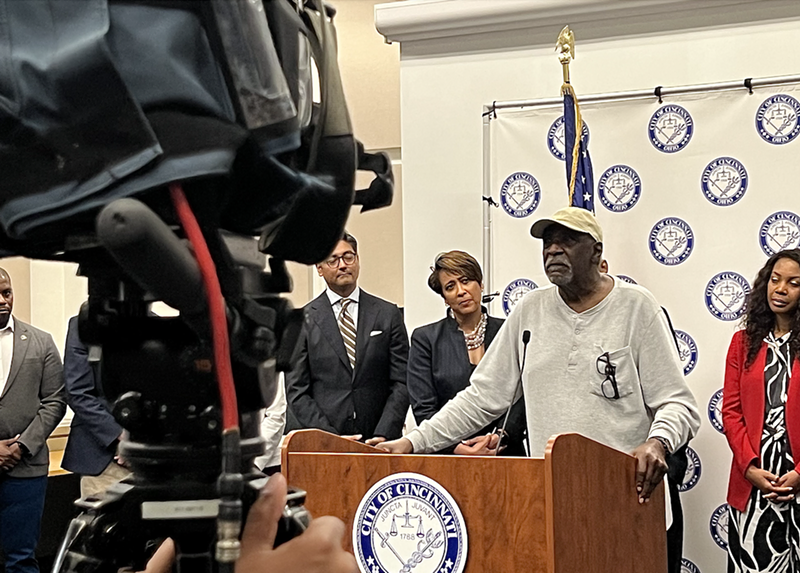 “If you could have seen it, you would think it’s an evacuation. Every street had those trucks on them. If those people didn’t move in 30 days they came in and evicted them and put all their stuff on the outside,” he said. “That was traumatic. It was. It always stayed in my head, ‘Mother, where are we going? Daddy, where are we going?’ ‘We don’t know yet.’”
“If you could have seen it, you would think it’s an evacuation. Every street had those trucks on them. If those people didn’t move in 30 days they came in and evicted them and put all their stuff on the outside,” he said. “That was traumatic. It was. It always stayed in my head, ‘Mother, where are we going? Daddy, where are we going?’ ‘We don’t know yet.’”
With hushed audience members and reporters before him, and elected officials and dignitaries behind him, Wright recalled his experience of being evicted from his West End home as a 13-year-old boy.

Photo: Madeline Fening
Oscar Wright, 87, addresses community members, reporters and city leaders during the city's apology for postwar razing of the West End.
Wright said police patrolled the West End as a reminder that forced eviction was imminent for families who refused to leave. His family ended up finding a place in Avondale, a home that had been broken up into multiple tiny units to accommodate the West End overflow. He, along with his four siblings, shared a single bathroom with three floors of families.
"It was existing,” he recalled.
CityBeat asked Wright what his parents would think to hear the city’s apology now.
“They would never believe it,” he said without hesitation. “They’ve heard so many lies.”
“They would never believe it,” he said without hesitation. “They’ve heard so many lies.”
The remedy
Technically, there was no new announcement during the press conference regarding fixing the sins of administrations past, but leaders highlighted the ongoing efforts to make amends by reinvesting in the West End.
“An apology alone is not enough,” said Pureval. “What do we do now to support the West End?"
Pureval listed ways the city has “aggressively pursued opportunities to begin stitching the West End back together,” including:
“An apology alone is not enough,” said Pureval. “What do we do now to support the West End?"
Pureval listed ways the city has “aggressively pursued opportunities to begin stitching the West End back together,” including:
- Pedestrian safety implementations
- The successful application for $20 million in a federal RAISE grant money to bring road diets, bike lanes and tree covers to the neighborhood
- A $7 million investment to address areas of the Mill Creek corridor that have been impacted by industrial pollution
- Supporting small locally-owned businesses through leveraged support
“We are working day in and day out to create a cohesive space that feels like home to its residents, and we won’t stop until we get it right,” Pureval said.
Moving forward, Pureval said the city will partner with the Cincinnati Metropolitan Housing Authority (CMHA) to pursue a $50 million choice grant with the goal of revitalizing a section of Linn Street with new housing “for all income levels.”
The mayor also referenced the ongoing work to revitalize the historic Regal Theater at the corner of Linn Street and Clark Street to become the city’s first African-American multicultural center.
The mayor also referenced the ongoing work to revitalize the historic Regal Theater at the corner of Linn Street and Clark Street to become the city’s first African-American multicultural center.
The “urban renewal” initiative in 1948 was part of a post-war federal highway initiative to connect suburbs to the urban core by tearing through long-established low-income neighborhoods. Now, Pureval says federal dollars will help to fix the longstanding damage.
“The amount of federal money available right now is extraordinary. We’ve already been successful with a $20 million RAISE grant which is intended to transform Linn Street in the West End, and hopefully support the local businesses that are there now,” he said. “We understand that this choice program through [the Department of Housing and Urban Development], the $50 million available, has an opportunity to truly change the way housing is done in the West End.”
“The amount of federal money available right now is extraordinary. We’ve already been successful with a $20 million RAISE grant which is intended to transform Linn Street in the West End, and hopefully support the local businesses that are there now,” he said. “We understand that this choice program through [the Department of Housing and Urban Development], the $50 million available, has an opportunity to truly change the way housing is done in the West End.”
Addressing possible sins of the present
When asked if the city should apologize for the construction of TQL Stadium in the West End, which displaced a handful of residents, Johnson said the experiences were incomparable.“To be quite honest with you, I can understand why some would see it like that, but what took place in 1948 and what took place with TQL, I don’t think it’s close,” Johnson said. “When you talk about the complete devastation of businesses, the complete devastation of people’s homes that they owned, I don’t think that’s close.”
Others have raised concerns about the expansion of the Western Hills Viaduct from two lanes to four going into South Fairmount, which would be another highway project to have a potential impact on a lower-income area that worries pedestrian advocates.
Pureval said the June 13 apology from the city marks a moment of acknowledging the sins of the past so they are not repeated in the present or future.
“To the residents of the West End, we are here for you," he said. "We recognize the trauma that our community has faced, and we are working to learn from history so we don’t repeat it again."
Follow CityBeat's staff news writer Madeline Fening on Twitter and Instagram.
Subscribe to CityBeat newsletters.
Follow us: Apple News | Google News | NewsBreak | Reddit | Instagram | Facebook | Twitter | Or sign up for our RSS Feed

